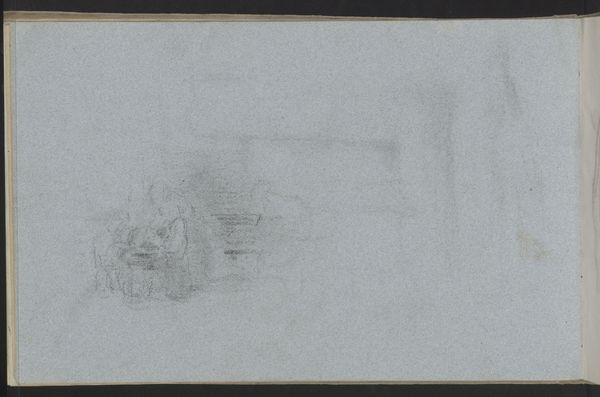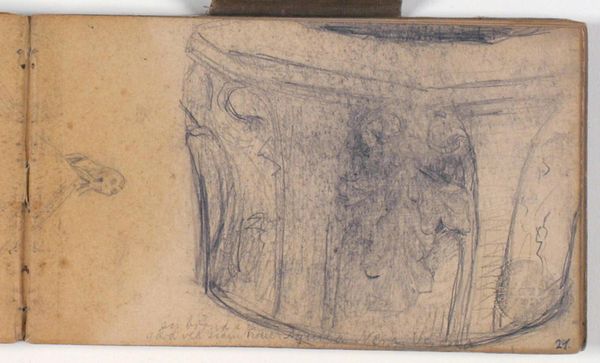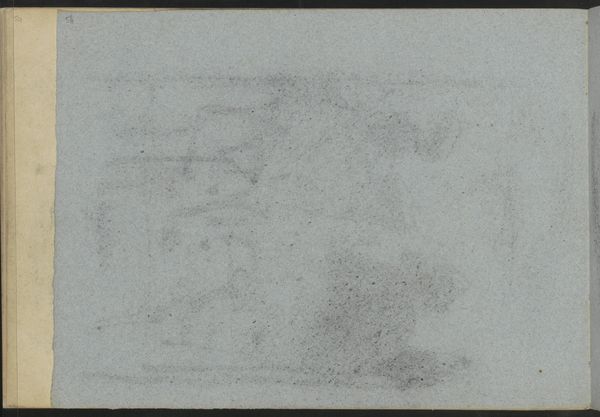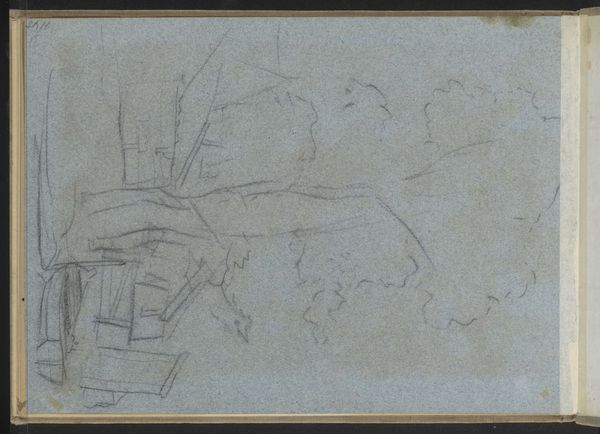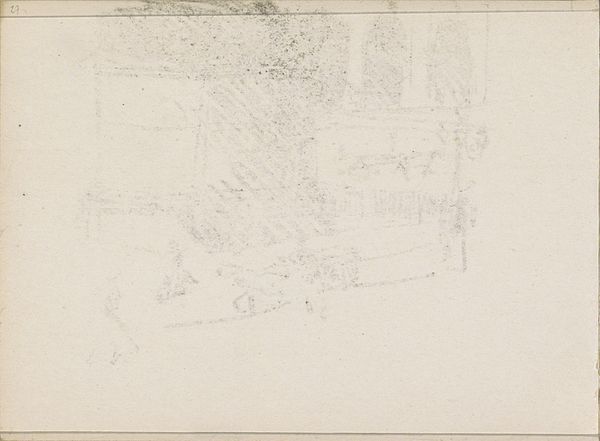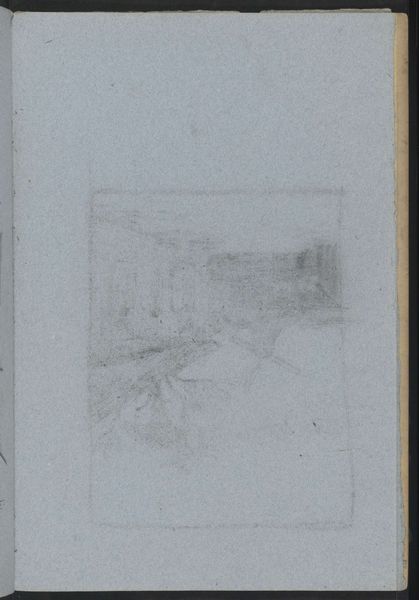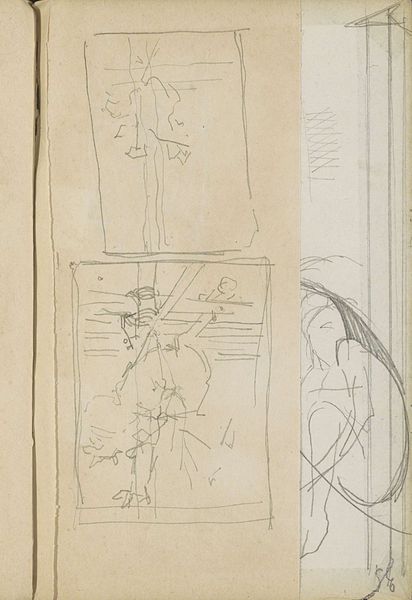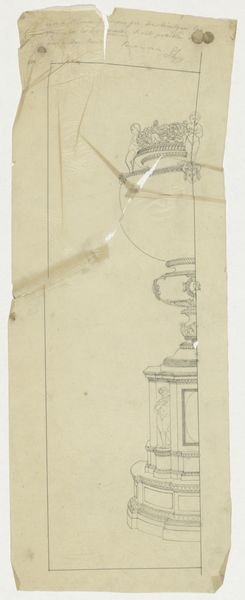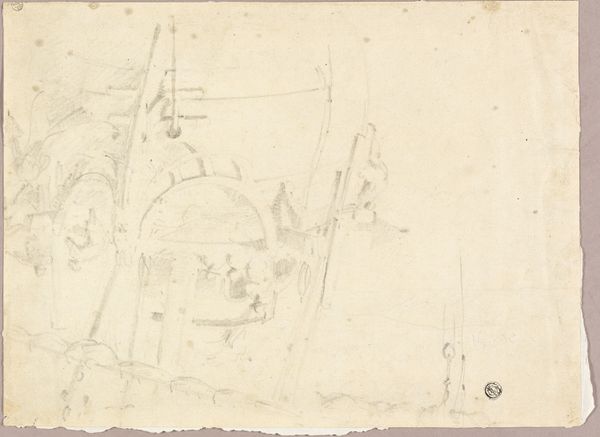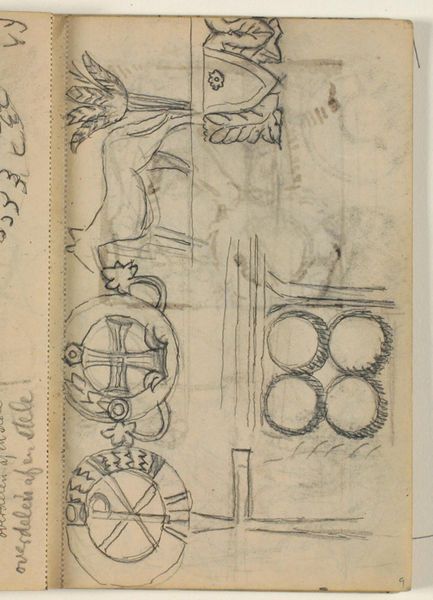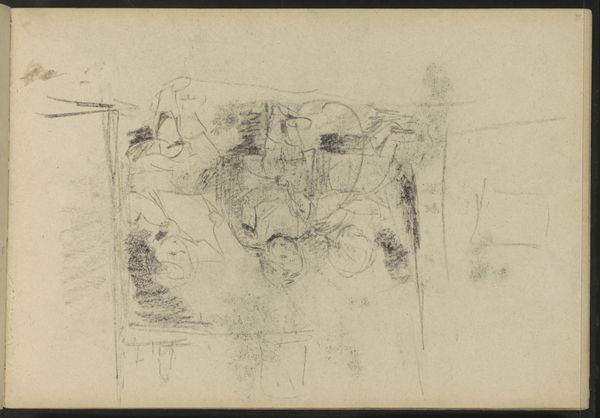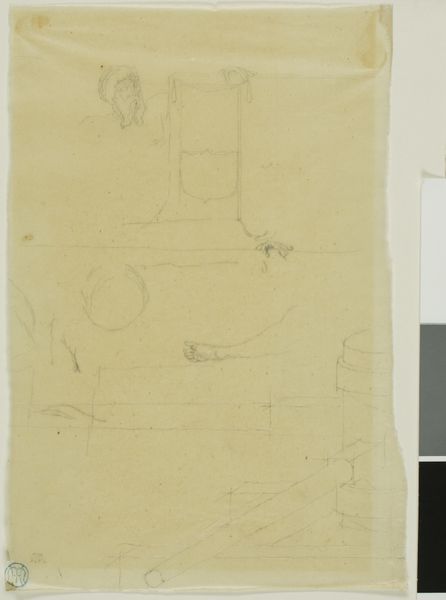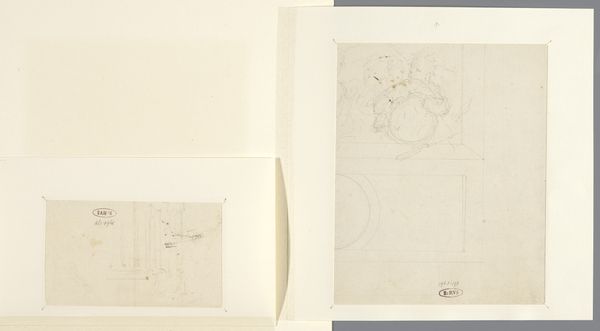
drawing, paper, pencil
#
drawing
#
impressionism
#
landscape
#
paper
#
pencil
#
watercolor
Copyright: Rijks Museum: Open Domain
Editor: This is "Schaapskooi met liggende schapen," or "Sheepfold with Sheep Lying Down," a pencil and watercolor drawing on paper by Willem Witsen, sometime between 1884 and 1887. It’s a quick sketch, almost ephemeral. What do you see in this piece that might connect it to its time, or even to today? Curator: The sheep themselves are intriguing; they're more than just animals, aren't they? For centuries, across various cultures, sheep have represented innocence, docility, and belonging to a flock. In this drawing, the sheep's recumbent poses exude calmness and safety, tucked away in a confined barn space. But Witsen, working during a period of intense industrialization and social change, could be using that imagery ironically. Editor: That's fascinating, so are you saying the sheep, typically seen as symbols of pastoral life, might also represent something about society at that time? Curator: Precisely! Think of the rise of urban centers, populations being herded into factories. The sheep’s enclosure… does it evoke feelings of safety, or constraint? Consider how our understanding of symbols evolve alongside societal changes, even today. What is "belonging" to a flock or tribe these days, in the era of the Internet? Is the drawing idyllic, or is there perhaps something vaguely ominous about it, reflecting on the changing human condition and how symbols might lose meaning over time? Editor: I hadn’t considered it that way. It’s amazing how a simple drawing of sheep can reflect such complex ideas. I will never look at a pastoral scene the same way again! Curator: And I will not see technology quite the same way again, so that such concepts as "tribe", "community" and "belonging" now change rapidly.
Comments
No comments
Be the first to comment and join the conversation on the ultimate creative platform.
